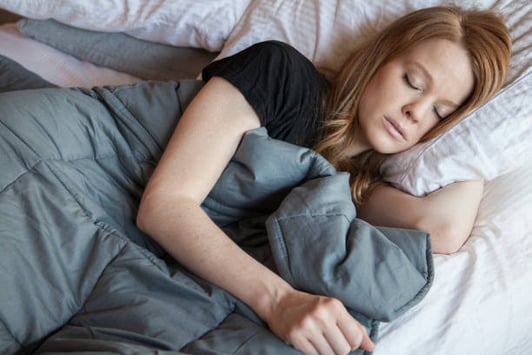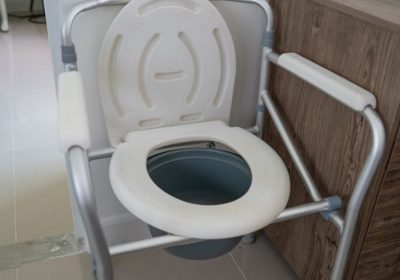Unraveling the Comfort and Benefits of Weighted Blankets
The rising popularity of weighted blankets.

In recent years, the use of weighted blankets has experienced a meteoric rise in popularity across various age groups. Initially designed as a therapeutic tool for individuals with sensory processing disorders and anxiety, these blankets have now gained widespread recognition and adoption for their potential to promote relaxation, better sleep, and overall well-being. This article provides a brief overview of the factors contributing to the soaring popularity of weighted blankets and their impact on modern society.
Therapeutic Origins of weighted blankets:
The concept of weighted blankets can be traced back to deep pressure therapy, a therapeutic technique used by occupational therapists to calm and soothe individuals with sensory and emotional challenges. The application of deep pressure through weighted objects, including blankets, has been found to stimulate the release of neurotransmitters like serotonin and dopamine, which can reduce stress, anxiety, and promote a sense of calmness.
Enhanced Sleep Quality from:
One of the key reasons for the rising popularity of weighted blankets is their ability to improve sleep quality. The gentle, even pressure exerted by these blankets is believed to mimic the feeling of a comforting hug, inducing a sense of security and relaxation that can lead to better sleep. This has particularly attracted attention from individuals struggling with sleep disorders like insomnia and restlessness.
Anxiety and Stress Reduction:
In today’s fast-paced and demanding world, anxiety and stress have become prevalent issues affecting millions of people. Weighted blankets are increasingly being viewed as a natural, drug-free intervention to alleviate anxiety and stress. The deep touch pressure provided by the blankets can help trigger the body’s relaxation response, leading to reduced levels of stress hormones and a more relaxed state of mind.
Diverse Designs and Materials:
Weighted blankets are now available in a variety of designs, sizes, and materials, catering to individual preferences and needs. Options such as cooling fabrics for warm climates and washable, hypoallergenic materials have expanded their appeal to a broader audience.
Understanding Weighted Blankets
Choosing the Right Weighted Blanket:
When selecting a weighted blanket, it is essential to consider the individual’s body weight. As a general guideline, the blanket should be approximately 10% of the person’s body weight. For example, a person weighing 150 pounds would typically use a 15-pound weighted blanket.
It is crucial to choose a reputable and safe product from a trusted manufacturer. Weighted blankets should be well-constructed with secure stitching to prevent the filling from shifting excessively.
Different types and weights of blankets.
Weighted Blankets:
Weighted blankets are filled with materials like glass beads, plastic pellets, or metal chains to add weight evenly across the blanket. These blankets are available in various sizes and weights to suit different individuals’ needs. The recommended weight for a weighted blanket typically ranges from 5% to 15% of a person’s body weight.
Cooling Weighted Blankets:
Cooling weighted blankets are designed with breathable and moisture-wicking materials to help regulate body temperature. They are ideal for individuals who tend to get warm during sleep or in hot climates. Cooling weighted blankets offer the same deep pressure stimulation as regular weighted blankets but with added temperature control.
Weighted Blankets with Removable Covers:
Some weighted blankets come with removable covers that can be easily washed and changed. These covers are often made from soft, durable materials and can help prolong the life of the weighted blanket while providing a customizable look and feel.
Weighted Blankets for Kids:
Weighted blankets designed specifically for children typically come in smaller sizes and lighter weights to suit their smaller bodies. They often feature fun patterns and colors to appeal to children’s preferences.
Weighted Blankets for Adults:
Weighted blankets for adults are larger and heavier, catering to the needs of a more significant body size. They come in a variety of materials and weights to accommodate different preferences.
Weighted Blankets for Therapy:
Some weighted blankets are specifically designed for therapeutic use, particularly for individuals with sensory processing disorders, autism, or anxiety. These blankets are often used in occupational therapy and sensory integration practices.
Weighted Lap Pads:
Weighted lap pads are smaller and lighter versions of weighted blankets designed to be placed on the lap. They can be used in various settings, such as at school, work, or during relaxation sessions, to provide calming sensory input.
DIY Weighted Blankets:
Some individuals prefer to make their own weighted blankets as a DIY project. DIY weighted blankets require careful selection of appropriate materials and weights, and they can be customized to suit personal preferences.
Choosing the Right Weight:
Selecting the appropriate weight for a weighted blanket is essential to ensure it provides the desired therapeutic effect without being too heavy or too light. As a general guideline, the weight of the blanket should be around 5% to 15% of the individual’s body weight. For example, if someone weighs 150 pounds, a suitable weighted blanket weight would be between 7.5 to 22.5 pounds. However, it’s essential to consult with a healthcare professional or occupational therapist for personalized recommendations based on individual needs and conditions.









